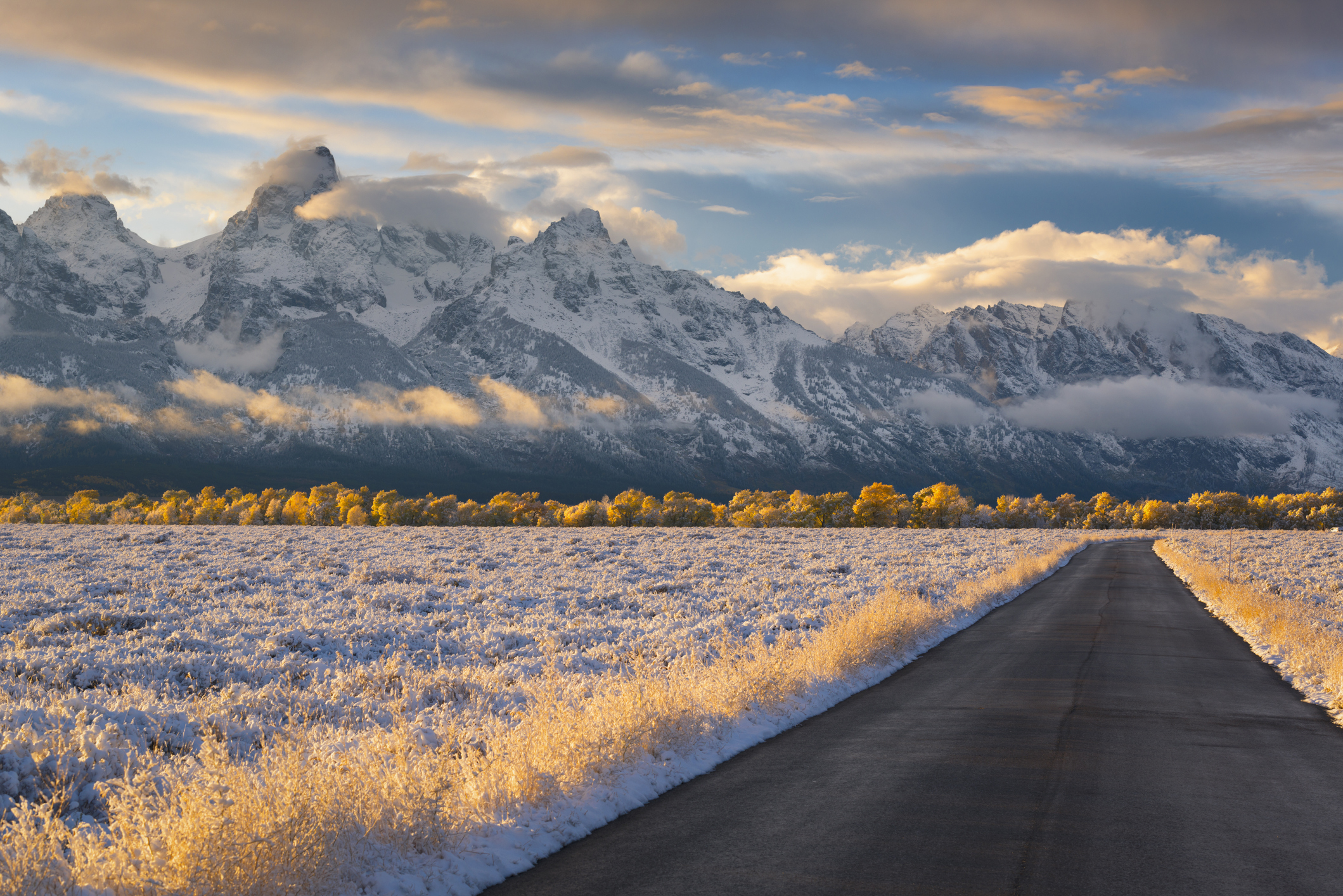A Spotlight on the Mountain States: The Kiplinger Letter
Most Mountain states are seeing good job growth in multiple sectors from healthcare, energy, and semiconductor production to farming and government.


To help you understand what is going on in the economy our highly experienced Kiplinger Letter team will keep you abreast of the latest developments and forecasts (Get a free issue of The Kiplinger Letter or subscribe). You'll get all the latest news first by subscribing, but we will publish many (but not all) of the forecasts a few days afterward online. Here’s the latest…
Idaho will lead the way economically among the Mountain states this year, with job growth of 2%. People are still flocking to the Gem State, though the rate has fallen considerably since the pandemic. Housing prices in Idaho have risen faster than in any other state over the past five years as the population rose. Construction, healthcare and state government are all hiring briskly to keep up. Drought figures to crimp farm profits, but farm income should still come in strong, and a possible shift to a La Niña weather pattern this year could lead to more rainfall.
The University of Idaho agreed to purchase the for-profit University of Phoenix. They want to convert the mostly online school into a non-profit. However, the Idaho legislature is opposed, and the deal may fall through.
Wyoming will be close behind Idaho, as its employment grows by 1.9%. Energy is a major driver of the state economy, from oil, gas and coal to solar power and wind farms, and even a proposed nuclear plant near Kemmerer — a real rarity in a nation that has built almost no reactors in recent decades. AES Corporation will build a 150 MW, 40-turbine wind farm near Glenrock, to open in late 2026. A 500 MW solar farm nearby is going through hearings currently, and could also open in 2026. A solar project is under construction near Cheyenne, and another is planned near Yoder. PacifiCorp’s control center for the over 1,000 wind turbines it runs in the West is in Casper.

Sign up for Kiplinger’s Free E-Newsletters
Profit and prosper with the best of expert advice on investing, taxes, retirement, personal finance and more - straight to your e-mail.
Profit and prosper with the best of expert advice - straight to your e-mail.
An underground carbon storage site is planned near Gillette, which may have a better shot at going forward because the pipeline to bring in the CO2 would be relatively short. Major deposits of rare earth elements needed for high-tech gear are also promising. The state has the potential to become a world leader in rare earths mining, with major deposits near Wheatland, Upton, and Sheridan. American Rare Earths says that its Wheatland deposits are much larger than previously known, at 2.3 billion tons.
Arizona is also growing swiftly, on tap for 1.5% employment growth. The state’s labor force has been rising steadily, helped by the continued in-migration that has boosted the construction and health care sectors, especially. The state has become a major hub for semiconductor production. TSMC has an enormous plant under construction north of Phoenix that is scheduled to open by 2025 and has plans for a second one to open by 2028. Intel is also investing heavily in Arizona, which could host the future federal center for semiconductor research.
Home building in the Phoenix metro area is expected to be a bit better this year. Traditionally, housing development in this area took place on the southeast side, called the East Valley. But the west and northwest sides along Route 303 are now getting attention, with a big data center project slated for Buckeye. The main constraint appears to be water, though the rise in the level of Lake Mead helping for now. Blackstar Orbital is going to build its hybrid spaceplane/satellite at the Siera Vista airport near the border in 2026. … The 2024 National Pickleball Championships will take place in November in Mesa this year.
Utah will rival Arizona, with job growth of 1.5%. The jobless rate is just 2.8% in Utah, though that’s up a bit from last year. In-migration is slowing, taking pressure off home prices, which should tick up only 1-3% this year. Salt Lake City and Provo have seen hiring slow the most, whereas Ogden is still strong. Lithium extraction from the Great Salt Lake using a more environmentally friendly method could go ahead in a few years. The company behind it, Lilac Solutions, hopes to be operating by 2026. Western actor Kevin Costner is building an elaborate film studio in St. George called Territory Film Studios. It will have sound stages, warehouses, offices, and a restaurant. Northrop Grumman is planning an expansion in its rocket division, spending $1 billion and hiring 1,200.
Montana's job growth is a bit slower at 1.3%. As in Idaho, the population is growing rapidly, thanks to in-migration, though that trend has been slowing. Drought is a serious problem for farmers, as dry conditions spread east this year. Cattle ranchers are benefiting from high beef prices, but drought has thinned herds. It will take a few years to get herd sizes back to normal. The local firearms industry is growing, with new plants on tap in Glendive and Helena. German-based VACOM, a vacuum components manufacturer, will establish its U.S. headquarters in Lewiston, bringing 500 jobs.
Colorado is last on the list, with solid job growth of 1.1%. The labor market is tight, with the most unfilled jobs of any state in the region. Hiring is going strong in healthcare and local government, but other sectors are soft. Denver is struggling with an influx of illegal migrants, and the state legislature is debating a measure to curb new oil and gas development, which contributes 4% to the state’s GDP. Longmont is making a bid to become a semiconductor hub with state financing. Goose Gear, a maker of off-road vehicle accessories, is moving its HQ to Grand Junction. The strongest population percent growth is occurring in the central interior west of Denver and in the southwest corner of the state.
This forecast first appeared in The Kiplinger Letter, which has been running since 1923 and is a collection of concise weekly forecasts on business and economic trends, as well as what to expect from Washington, to help you understand what’s coming up to make the most of your investments and your money. Subscribe to The Kiplinger Letter.
Related Content
- A Spotlight on the Mid-Atlantic States: The Kiplinger Letter
- A Spotlight on the Mid-South States: The Kiplinger Letter
- A Spotlight on the Midwest: The Kiplinger Letter
- A Spotlight on New England: The Kiplinger Letter
- A Spotlight on the Southeastern States: The Kiplinger Letter
- A Spotlight on the South Central States: The Kiplinger Letter
- A Spotlight on the Plains States: The Kiplinger Letter
Get Kiplinger Today newsletter — free
Profit and prosper with the best of Kiplinger's advice on investing, taxes, retirement, personal finance and much more. Delivered daily. Enter your email in the box and click Sign Me Up.

David is both staff economist and reporter for The Kiplinger Letter, overseeing Kiplinger forecasts for the U.S. and world economies. Previously, he was senior principal economist in the Center for Forecasting and Modeling at IHS/GlobalInsight, and an economist in the Chief Economist's Office of the U.S. Department of Commerce. David has co-written weekly reports on economic conditions since 1992, and has forecasted GDP and its components since 1995, beating the Blue Chip Indicators forecasts two-thirds of the time. David is a Certified Business Economist as recognized by the National Association for Business Economics. He has two master's degrees and is ABD in economics from the University of North Carolina at Chapel Hill.
-
 Fired Up By the Masters and RBC Heritage? See These Homes for Sale By Golf Courses
Fired Up By the Masters and RBC Heritage? See These Homes for Sale By Golf CoursesFive homes for sale near golf courses, for people who can't get enough of the tour.
By Alexandra Svokos
-
 The Economic Impact of the US-China Trade War
The Economic Impact of the US-China Trade WarThe Letter The US-China trade war will impact US consumers and business. The decoupling process could be messy.
By David Payne
-
 The Economic Impact of the US-China Trade War
The Economic Impact of the US-China Trade WarThe Letter The US-China trade war will impact US consumers and business. The decoupling process could be messy.
By David Payne
-
 What DOGE is Doing Now
What DOGE is Doing NowThe Kiplinger Letter As Musk's DOGE pursues its ambitious agenda, uncertainty and legal challenges are mounting — causing frustration for Trump.
By Matthew Housiaux
-
 A Move Away From Free Trade
A Move Away From Free TradeThe Letter President Trump says long-term gain will be worth short-term pain, but the pain could be significant this year.
By David Payne
-
 Trump’s Whirlwind Month of Crypto Moves
Trump’s Whirlwind Month of Crypto MovesThe Kiplinger Letter The Trump administration wants to strengthen U.S. leadership in the cryptocurrency industry by providing regulatory clarity.
By Rodrigo Sermeño
-
 What Could Derail the Economy This Year?
What Could Derail the Economy This Year?The Letter While the outlook for the U.S. economy is mostly favorable, there are plenty of risks that bear watching.
By David Payne
-
 Three Ways President Trump Could Impact the Economy
Three Ways President Trump Could Impact the EconomyThe Letter Some of Trump's top priorities could boost economic growth, but others risk fueling inflation.
By David Payne
-
 10 Predictions for 2025 from The Kiplinger Letter
10 Predictions for 2025 from The Kiplinger LetterThe Kiplinger Letter As 2025 arrives, here are our top 10 forecasts for the new year.
By Letter Editors
-
 Europe Faces Economic and Political Headwinds Next Year
Europe Faces Economic and Political Headwinds Next YearThe Letter Challenges for Europe: Potential tariffs, high energy prices and more competition from China will weigh on the bloc in 2025.
By Rodrigo Sermeño